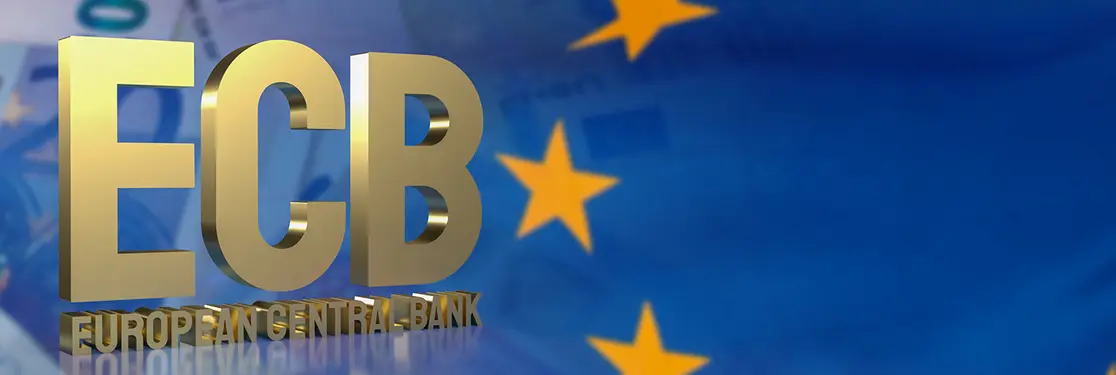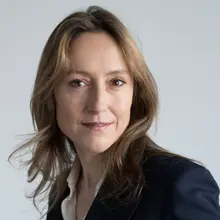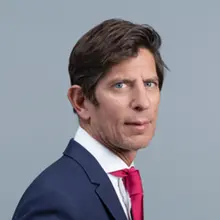Summary
Key takeaways
- The ECB raised its policy rates by 75bp as expected by the market and announced changes to the terms of TLTRO for Monetary Policy reasons.
- A more dovish tone: The most important point of the meeting was the more dovish tone taken by the ECB due to the deteriorating economic outlook. Indeed, Christine Lagarde stressed that the potential impact of a recession on inflation will be a key consideration for future decisions.
- Revision to the terminal rate: we have revised our terminal rate from 2.75% to 2.5%. This is reflected in our forecast of a further 50 basis point hike in key rates on December 15 and a continued rise, albeit more slowly, thereafter. Our terminal rate forecast could be revised downwards in the event of a deep and prolonged recession. This is not our central scenario today.
- An uncertain economic backdrop and the ECB’s more dovish tone confirms that government bonds and high quality credit are now more appealing for investors compared to previous months. We keep an overall slightly negative to neutral stance on duration and credit.
What are the key messages from the October ECB meeting?
The ECB has turned more dovish on the back of the deterioration in the economic outlook:
- The ECB has reiterated its strong commitment to fighting inflation, which it says remains ‘far too high’ and will stay above target for an extended period.
- However, the ECB seems much more worried about the outlook for growth. The ECB expects a further weakening in economic activity over the remainder of this year and the beginning of next year. The major risk remain a long lasting war in Ukraine with a rise in the price of food and energy. Risks to the economic outlook are seen as clearly on the downside.
The new statement suggests a less aggressive rate hike path ahead:
- The reference to “next several meetings” regarding future rate hikes was replaced: the governing council “expect to raise interest rates further.”
- Furthermore in the previous statement, the Governing Council expected “to raise interest rates further to dampen demand” while now, ” monetary policy is aimed at reducing support for demand (2) ”
The ECB will continue its “meeting-by-meeting” approach, taking into account three important criteria in its decision making:
- The inflation outlook including the evolution of the economic outlook,
- Measures taken so far
- The transmission lag of monetary policy.
The ECB notes that incoming data and the potential impact of a recession on inflation will be key considerations for future decisions. In addition, Christine Lagarde underlined that the central bank hasmade “substantial progress in withdrawing monetary policy accommodation.” The ECB could go beyond neutral rate. The terminal rate is the rate that will deliver the 2% inflation target in the medium term.
The ECB has turned more dovish suggesting a less aggressive rate hike path ahead.
What do you expect in terms of balance sheet reduction?
We continue to think that the bulk of the ECB’s balance-sheet reduction will be achieved by the repayment of TLTRO. ECB recalibrated the third series of targeted longer-term refinancing operations (TLTRO III) to ensure consistency with its broader monetary policy normalization process. The change in conditions for TLTRO is for Monetary Policy reasons. In in order of importance/relevance, these are
- No need to make TLTRO so attractive following recent rates increase.
- possibly faster balance sheet reduction, through eventual early repayments of the bulk of scheduled redemption in June next year
- less scarcity effects and increase in available collaterals (but no “panacea” effect expected here, as sovereign bonds are only a part of the collateral used by banks, so this is not the main motivation).
Key principles of reducing the asset-purchase program portfolio will be decided in December.
We belive that the balance sheet reductions will be achieved mainly by the repayment of TLTRO.
What is your view on the ECB terminal rate?
We see the terminal rate at 2.5%. This is reflected in our expectation that policy rates will rise by another 50bp on 15 December, and continue to increase, albeit more slowly, thereafter. Risks are on downside revisions in case of significant and prolonged recession. This is not our central scenario today.
What is your view on euro fixed income in light of the ECB move?
The market considers this meeting as a dovish pivot because:
- the ECB underlined that after the last three rate hikes they made “substantial progress in withdrawing monetary policy accommodation”, meaning we are closer to the neutral rate.
- Moreover, the ECB declared that it was monitoring 3 factors: the inflation outlook including the evolution of economic activity (which is new), the impact of previous measures, and their transmission lag. This means the central bank will probably stop hiking before it sees a decrease in core inflation.
- No mention of Quantitative Tightening (QT) as this stage, be it on APP or PEPP. That has been left for December to discuss.
This resulted in a bullish repricing of rates, especially on the short maturities in the peripheral markets.
With a more dovish ECB, investors may come back on Euro Fixed Income, locking in some yield.
Our main convictions on the European fixed income markets remain unchanged. In particular:
- We keep a slightly negative to neutral duration stance in Euro fixed income. As indicated also by the ECB, risks remain both on inflation (far too high) and growth (deteriorating), calling for an overall neutral stance with some tactical adjustment amid market movements.
- We don’t change our view in peripheral bonds, where we remain neutral to slightly cautious. The PEPP and QT are still untested and while Italy is for now progressing on a measured policy path , we want to see more on this before changing our stance.
- In credit we keep an overall neutral stance, with a focus on the high quality credit amid the deteriorating economic outlook. We also recognize that current market valuations are attractive, in particular in the IG market.
- On EUR/USD, we do not see the ECB meeting as a game changer on the long-term strong USD dynamic. Despite expensive valuation we should wait for a Fed pivot before we see a reversal of the bullish trend for the USD. Some signs are emerging this might not be too distant in the future but we have seen other false signals already this year.
Definitions
-
Asset purchase programme (APP): A type of monetary policy wherein central banks purchase securities from the market to increase money supply and encourage lending and investment.
-
Basis points: One basis point is a unit of measure equal to one one-hundredth of one percentage point (0.01%).
-
PEPP: Pandemic emergency purchase programme.
-
Quantitative easing (QE): QE is a monetary policy instrument used by central banks to stimulate the economy by buying financial assets from commercial banks and other financial institutions.
-
Quantitative tightening (QT): QT is a contractionary monetary policy aimed to decrease the liquidity in the economy. It means that a CB reduces the pace of reinvestment of proceeds from maturing government bonds. It also means that the CB may increase interest rates as a tool to curb money supply.


